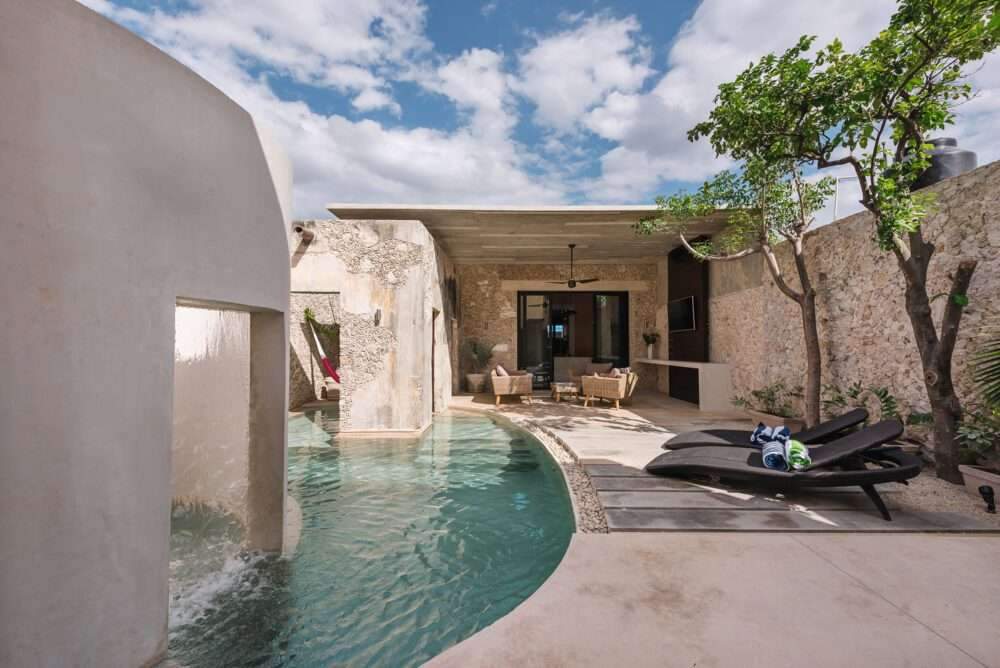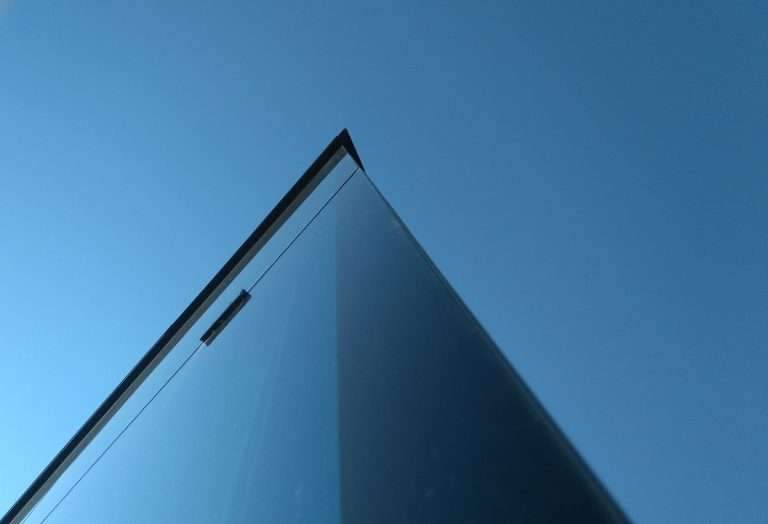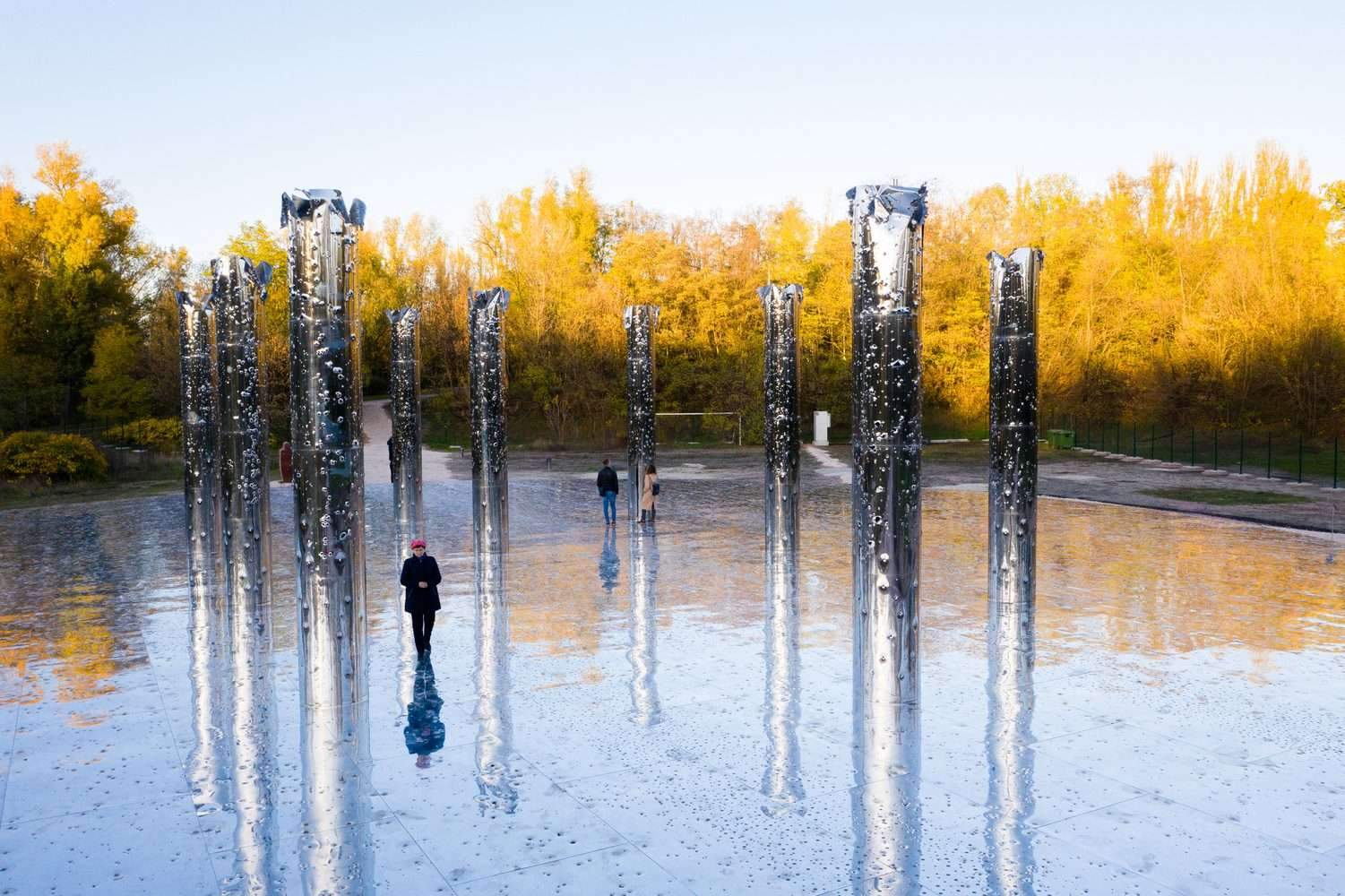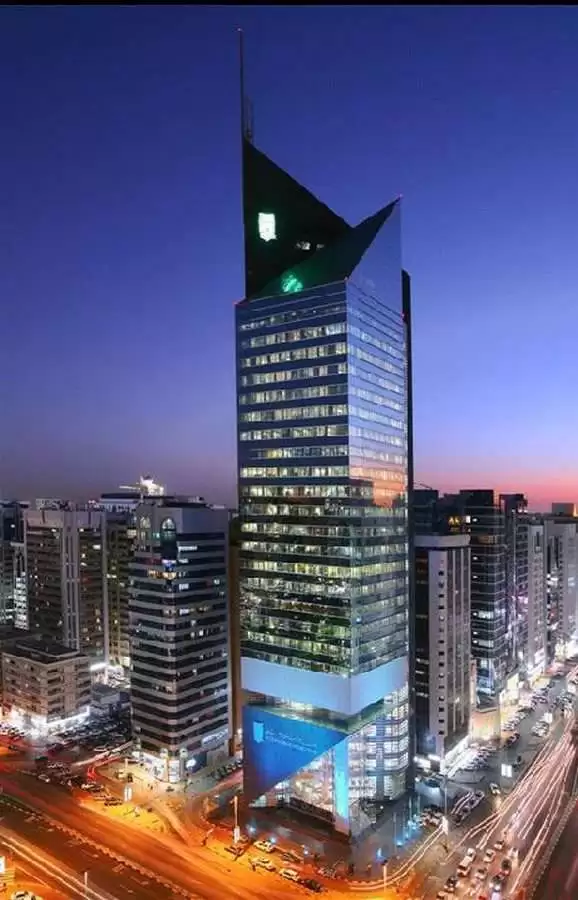Water and architecture are closely related to habitat design,
including both functional and aesthetic aspects.
The best option is to take this into account from the beginning of the design process.
The application of appropriate technologies and systems will determine the water consumption. at present,
It is our responsibility as professionals to think about how we can reduce and recycle water consumption within our homes.
There are various ways to meet these needs,
such as installing low-flow devices in faucets and showers,
dual toilets, and efficient landscaping irrigation systems.
In addition, rainwater collection systems can be implemented and reused for irrigation or house cleaning, which contributes to preserving them.
However, water can also play an important role in a home’s aesthetic design.

Elements such as fountains, ponds, pools,
or waterfalls can be incorporated indoors and outdoors to create visually appealing spaces and provide a sense of serenity and connection with nature.
In regions with warm climates, water can be used strategically in architectural design to achieve thermal comfort.
By incorporating “muros llorones” or waterfalls into interior areas or courtyards,
which cool the environment through evaporation.
Incorporating water into a home’s architectural design can be a creative and practical way to take advantage of this natural resource.
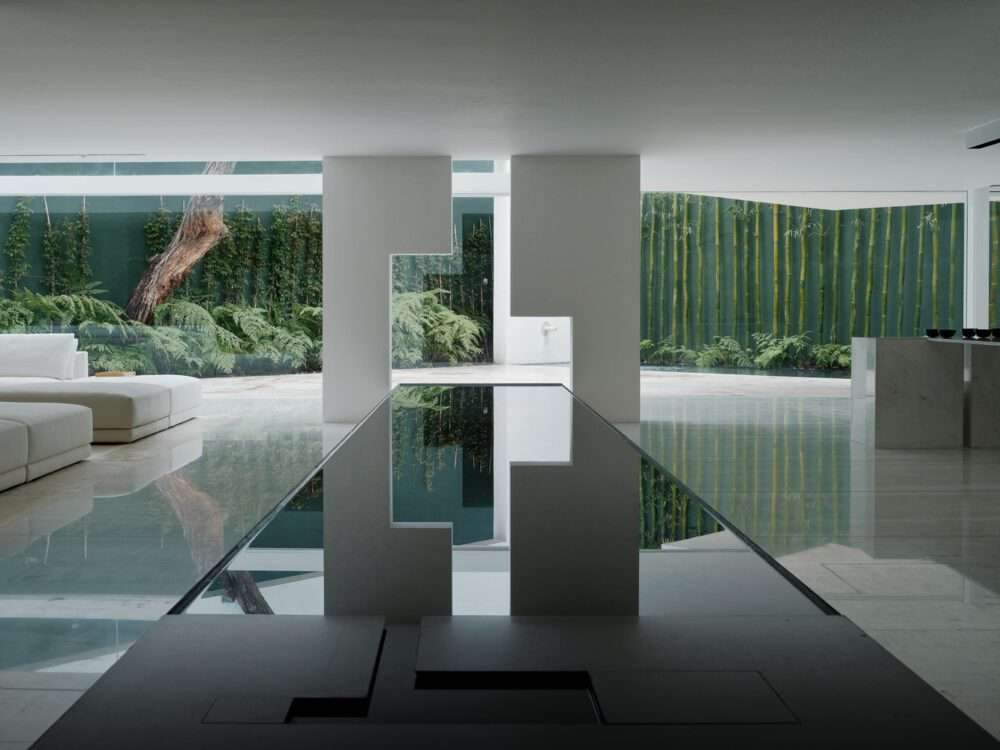
Rombo IV / Miguel Angel Aragones
Rombos (Diamonds) consist of four interconnected structures that blend with the formal design of the urban fabric.
It is a private space with three residences and a studio, located in a central,
tree-lined area of Mexico City called Bosques de las Lomas.
The constant presence of trees surrounds the space,
making them perhaps our most attended guests.
And anyway, the most enveloping, like water that flows continually.
Fountains and mirrors are still natural elements where the reflections enhance the environment, which is often green in this case.
Trees and plants are highly prized in densely populated cities,
along with water, land, and even privacy today.

Volta House / Ambrosian I Echigaray
The first thing you see when approaching Casa Volta are three brick vaults perched amid the dense vegetation of the Oaxacan coast.
It may seem like a mirage due to the intense heat and humidity in the area.
Then, in a small path, one immerses oneself in greenery, and the cellars disappear.
The biggest surprise comes when a small gap suddenly opens up.
It reveals a small bench next to a long pool of water flanked on either side by arcades of rectangular columns reflected in it.
It gives the impression of arriving in an abandoned classical temple.

